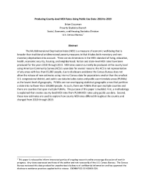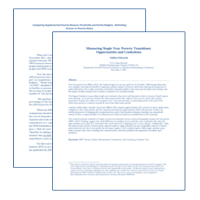
An official website of the United States government
Here’s how you know
Official websites use .gov
A .gov website belongs to an official government organization in the United States.
Secure .gov websites use HTTPS
A lock (
) or https:// means you’ve safely connected to the .gov website. Share sensitive information only on official, secure websites.
-
//
- Census.gov /
- Library /
- Census Working Papers /
- Producing County-level MDI Rates Using Public Use Data: 2010 to 2019
Producing County-level MDI Rates Using Public Use Data: 2010 to 2019
Producing County-level MDI Rates Using Public Use Data: 2010 to 2019
The Multidimensional Deprivation Index (MDI) is a measure of economic well-being that is broader than traditional unidimensional poverty measures in that it takes both monetary and non-monetary deprivations into account. There are six dimensions in the MDI: standard of living, education, health, economic security, housing, and neighborhood. Nation and state-level MDI rates have been produced for the years 2010 through 2019. MDI rates cannot currently be produced at the county level using American Community Survey (ACS) 1-year data for several reasons: the ACS is not representative of any areas with less than 65,000 people, due to disclosure avoidance the Census Bureau does not allow the release of new estimates using internal Census data for populations smaller than the smallest U.S. congressional district, and public use data includes states and public use microdata areas (PUMAs) as the lowest level of geography. PUMAs are non-overlapping statistical geographic areas that partition a state into no fewer than 100,000 people. As such, there are PUMAs that span multiple counties and there are counties that span multiple PUMAs. The purpose of this paper is twofold. First, a methodology is explained that creates county-level MDI rates from PUMA MDI rates using public use data. Second, these new estimates are used to explore how county MDI rates differed throughout the country and changed from 2010 through 2019.
Share
Related Information
WORKING PAPER
Poverty Working PapersSome content on this site is available in several different electronic formats. Some of the files may require a plug-in or additional software to view.
 Yes
Yes
 No
NoComments or suggestions?


Top


